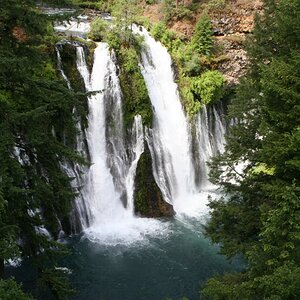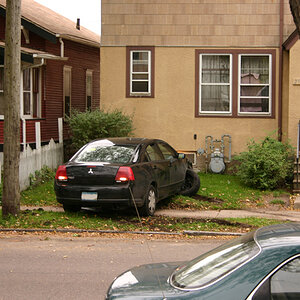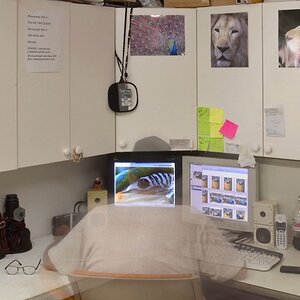Tim Tucker 2
No longer a newbie, moving up!
- Joined
- Jun 8, 2017
- Messages
- 333
- Reaction score
- 241
- Can others edit my Photos
- Photos OK to edit
Developing some 5x4 HP5 in a Mod54 tank, as normal and I got streaks across all the negs. Example below:

These are not consistent across the developed negs other than they run across the width so very unlikely to be fogging in the dark slides or camera, and there is no fogging on the film edges which rules out fogging in the box or while loading.
So I was thinking un-even development, and was annoyed at myself for ruining some (pretty mundane ) negs. So I left it a day, mixed fresh chems and started with a couple more paying strict adherence to my normal method. I came across this in the first neg. Presented as a positive and and reduced in size because it makes it clearer. This is an area of about 1" by 2" -ish:
) negs. So I left it a day, mixed fresh chems and started with a couple more paying strict adherence to my normal method. I came across this in the first neg. Presented as a positive and and reduced in size because it makes it clearer. This is an area of about 1" by 2" -ish:

Now to me, looking at the negs, they look suspiciously like the remnants of bubbles in the emulsion. It's almost as though you can see the *waves* of emulsion some with bubbles. So I'm now thinking that this is a manufacturing fault and that the streaks are actually the result uneven emulsion across a batch of about 13 negs.
Has anybody seen this before/what are your thoughts?
These are not consistent across the developed negs other than they run across the width so very unlikely to be fogging in the dark slides or camera, and there is no fogging on the film edges which rules out fogging in the box or while loading.
So I was thinking un-even development, and was annoyed at myself for ruining some (pretty mundane
Now to me, looking at the negs, they look suspiciously like the remnants of bubbles in the emulsion. It's almost as though you can see the *waves* of emulsion some with bubbles. So I'm now thinking that this is a manufacturing fault and that the streaks are actually the result uneven emulsion across a batch of about 13 negs.
Has anybody seen this before/what are your thoughts?



![[No title]](/data/xfmg/thumbnail/39/39291-a89dc472765e04f66f617dd9acc8030d.jpg?1619738958)

![[No title]](/data/xfmg/thumbnail/35/35947-ab35bfc67d8e12ce65dda301d3bf2b66.jpg?1619737255)




![[No title]](/data/xfmg/thumbnail/31/31748-63241c520f250328a5ec32959b8f53d0.jpg?1619734989)


